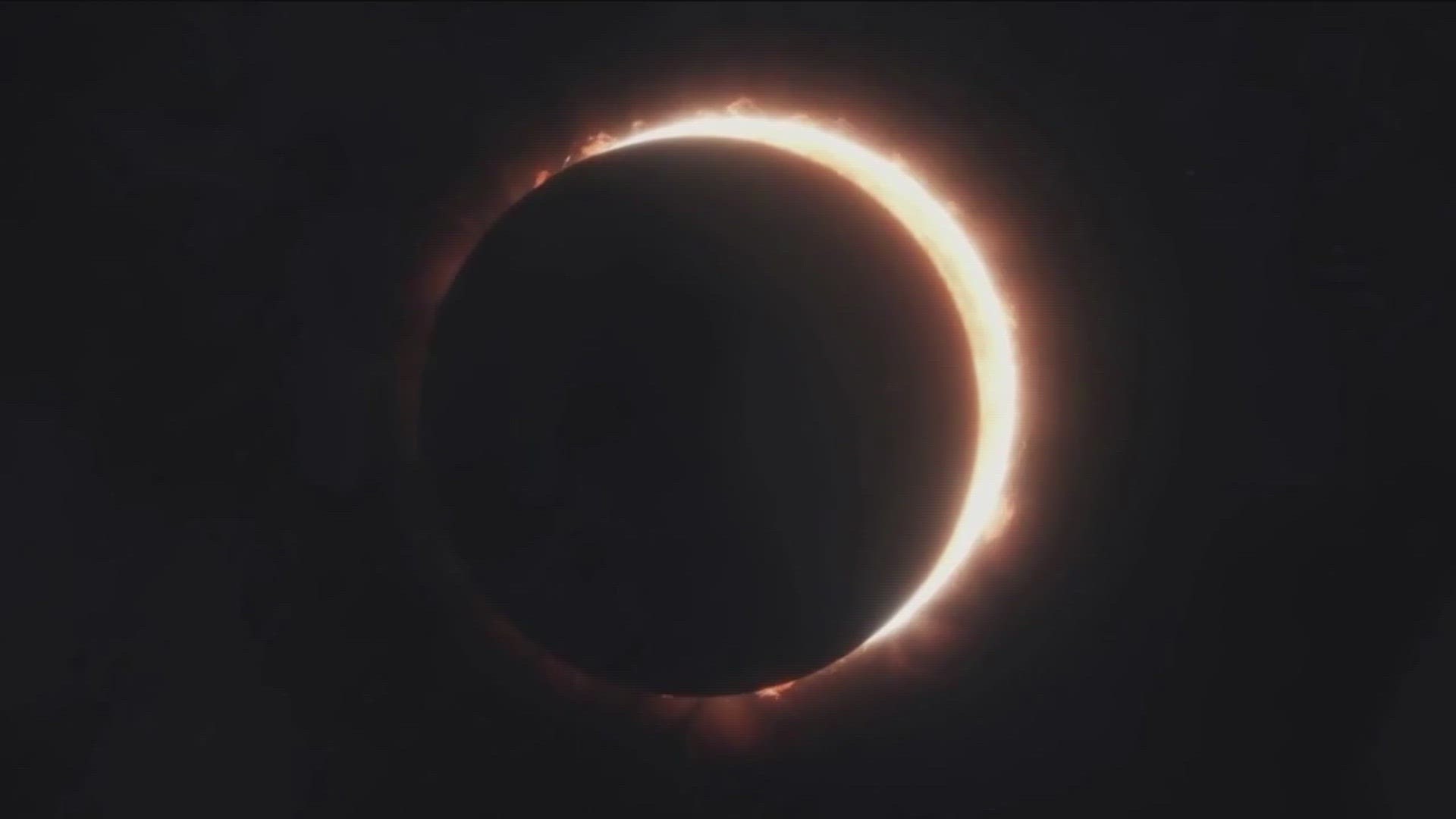AUSTIN, Texas — There’s no question that the occurrence of total solar eclipses has had profound effects on humans for thousands of years.
Archeologists know that because of the hand-carved and hand-painted depictions of the solar event on rocks, caves and pottery from generations of witnesses.
The oldest recorded eclipse in human history may have been in 3340 B.C.E.
A series of spiral-shaped and circular rock carvings were found at the Loughcrew Megalithic Monument in what is present-day County Meath, Ireland. It is believed to be a depiction of a solar eclipse. When archeologists discovered the carving, they found the remains of nearly 50 people, all burned – perhaps an indication of an early sacrifice.
At Chaco Canyon in New Mexico, a rock carving by early Pueblo People may represent an eclipse that occurred there in 1097.
The Mayans kept meticulous records of astronomical events, including solar and lunar eclipses, and documented them in stone carvings, painted them on pottery and murals and wrote about lunar and solar occurrences on books made from tree bark known as codices.
And as scientifically advanced as we consider ourselves today, we continue to marvel at the majesty and mystery of it all. We still seek more answers about how solar eclipses affect our planet.
NASA scientists will launch three sounding rockets during the total solar eclipse Monday from the Virginia Coast. The rockets will collect data to help scientists study how Earth's upper atmosphere is affected when sunlight momentarily dims.
And just in case you don’t think Monday’s eclipse in our part of Texas is a big deal, the last total eclipse of the sun over what is now present-day Austin occurred in the 1397. The next one take place on Feb. 25, 2343.

